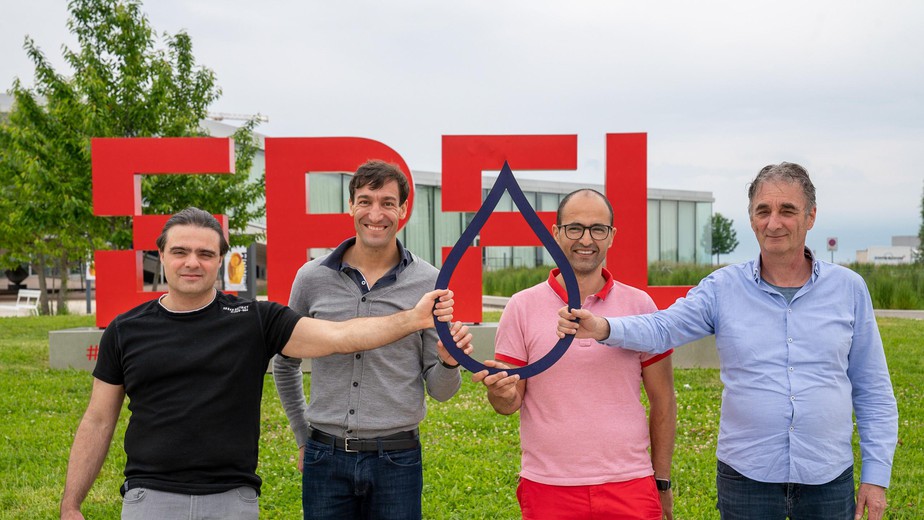
In June 2021, Droople entered a partnership with the Embedded Systems Laboratory (ESL) at the School of Engineering and the ALTIS Group (Valais) to implement the joint Research and Development project WaSTeLeSS. The project is planned to run until 2023 and achieve significant water savings in buildings through an advanced monitoring system based on distributed intelligence.
The ESL at the Institute of Electrical Engineering at EPFL, directed by Prof. D. Atienza, covers a wide range of research, teaching, and technology transfer activities related to the design of next-generation smart embedded systems and Internet of Things (IoT) objects.
The implementation of decentralized water monitoring frameworks at point-of-use should bring numerous benefits for property owners, managers, and tenants. It has great potential to reduce water and energy consumption. Also, it can minimize maintenance costs of sanitary hardware, heating and cooling systems, reduce CO2 emissions, and protect buildings from potential water damage thanks to water leakage localization on the last mile of the water grid.
Break-through capabilities for embedded devices with ultra-low power requirements
Droople was founded with the vision of implementing the smart grid for water. Indeed, in 2018, the United Nations World Water Development Report stated that nearly 6 billion people will suffer from clean water scarcity by 2050. To save every drop of this precious resource, Droople proposes a complete water intelligence solution at the point of use. It enables remote monitoring and conditional-based maintenance of any water-driven assets.
The WaSTeLeSS project has been set up to overcome the limitations of the currently embedded computing architectures used in water grid monitoring, where currently the sensing devices capture data from physical or chemical process and communicate them to the cloud to be processed using advanced data analysis techniques. However, no processing and analyses are done directly on the sensing devices, which limits the reaction time of the system and can imply a significant amount of energy spent on data communication to the cloud.
Therefore, the game-changing collaboration between Droople and the EPFL-ESL will advance the field of AI-enabled embedded devices with ultra-low power requirements, bringing break-through capabilities to both hardware and software layers by using edge AI computing. The introduction of the mesh sensor network architecture will enable massive synchronization of Machine Learning capabilities among the network nodes. It will also facilitate knowledge sharing among the entire mesh networks of smart sensors via federated machine learning, and a new fog computing system design.
The partners aim to tap into the many advantages offered by edge computing and federated learning. For example, by enabling a decentralized decision process and cloud autonomy of smart devices, the baseline response time of sensors can be dramatically improved in case of possible water leaks or issues on the water grid. Moreover, the communication energy between the device and the cloud can be reduced between 10 to 50 times, and the device lifetime target can be extended up to 10 years.
Testing for deployment on a large scale
The implementation of the novel solution will be carried out in collaboration with ALTIS Group, the water and energy supplier of the Verbier region in Valais. ALTIS Group will offer its support for the technical deployment including plumbing, hardware and cloud configuration, etc. Furthermore, a series of pilots is planned in various contexts, such as commercial, residential, and industrial building infrastructures. They aim at testing and validating the new generation of the Droople platform in the real environment for further deployment on a large scale.
The key advantage of this innovative collaboration is to enable wasteless and sustainable water use throughout all human activities. Through the monitoring and prediction of hot water demand (approx. 30% of total water consumption) the new water management platform will enable energy-saving potential, water stagnation monitoring at any point-of-use, leading to a reduction of CO2 emissions. Transparency offered by the pay-per-use billing is estimated to lead to 19% of water savings on average for shared buildings while leakage localization will protect the value of the properties. Above all, this remarkable research and industry partnership shared the goal of contributing to a solution for global water crisis through cutting-edge research and technology development.